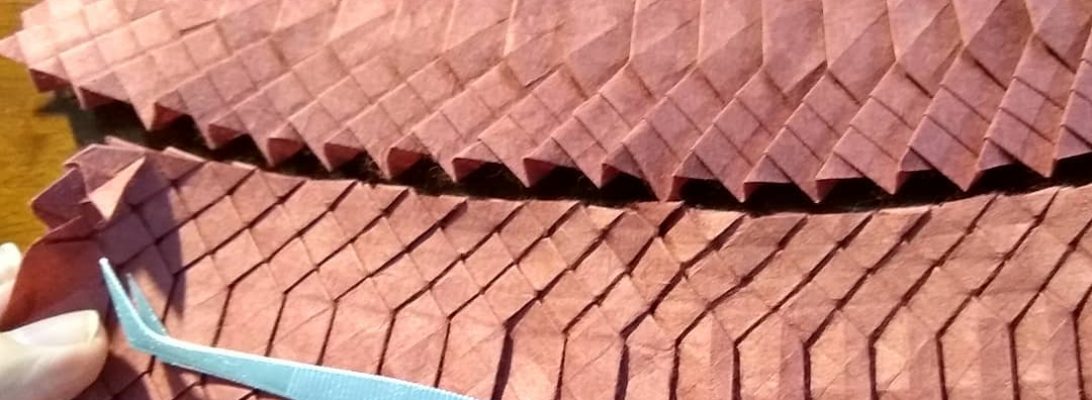Anyone who knows me realises I am a huge fan of the Alien movies, the first one is, for me, close to perfect science fiction horror:
I had been aware of Kade Chan’s Alien design for ages, had the crease pattern and wrestled many times trying to make it with no luck. I had relegated this to the “give up on it” pile – there are a few that have just beaten me for the moment.
Kade posted a near complete video tutorial, suddenly this model was back on the radar. The video is pretty clear – you should have a go – it is NOT a beginners model but the techniques for forming the main features are pretty clear.
So I set about a test fold, in Litho paper – the paper gave up half way through, splitting on most major creases, but I learned the basic collapse and some of the featuring before it gave up so resolved to fold it with something more durable.
I cut a 55cm square of Kraft paper off the roll and, very carefully, began folding. This, like most models, relies on accuracy for things to work out – a part of a mm out here and it compounds when you do accordion pleating, and this model has so many layers because of the amount of the sheet that is hidden.
I like that most surfaces provide layers that you can then texture in the modelling, sculpting them in graded steps to create carapace, armour and small beautiful details like the rib cage and prehensile tail.
The alien as envisaged by the movie franchise took on shape and general morphology from the host it bursts through the chest of – this one is fairly certainly humanoid and so posing it I found myself anthropomorphising its stance a little. I used a little MC to ensure the pose was rigid, clamped details in place until the paper was dry, then mounted him on a textured circular base and am quite chuffed with the result.
This was WTF (What’s That Fold) #2 – stay tuned for more paper bending




















































